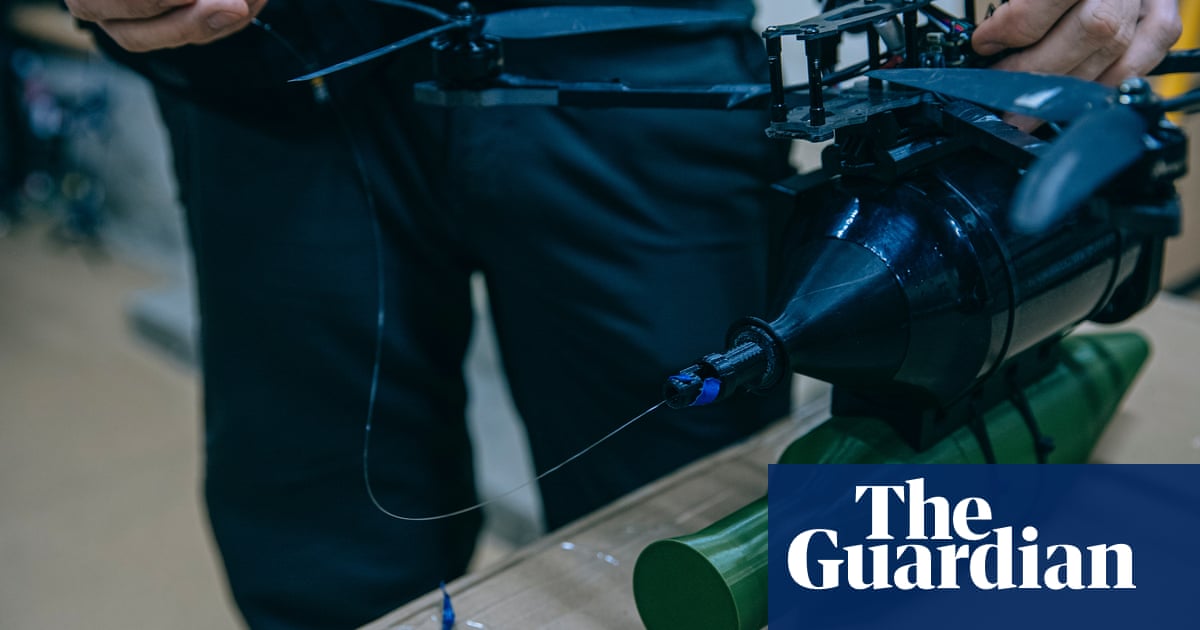At a secret workshop in Ukraine’s north-east, where about 20 people assemble hundreds of FPV (first person view) drones, there is a new design. Under the frame of the familiar quadcopter is a cylinder, the size of a forearm. Coiled up inside is fibre optic cable, 10km (6 miles) or even 20km long, to create a wired kamikaze drone.
Capt Yuriy Fedorenko, the commander of a specialist drone unit, the Achilles regiment, says fibre optic drones were an experimental response to battlefield jamming and rapidly took off late last year. With no radio connection, they cannot be jammed, are difficult to detect and able to fly in ways conventional FPV drones cannot.
“If pilots are experienced, they can fly these drones very low and between the trees in a forest or tree line. If you are flying with a regular drone, the trees block the signal unless you have a re-transmitter close,” he observes. Where tree lined supply roads were thought safer, fibre optic drones have been able to get through.



Huh, I remember one of the few draw backs of fiber optic cables being that you had to be very careful with them, because bending them could easily cause them to crack and no longer work. I’m guessing that must no longer be an issue!
Perhaps a sonic weapon at the right frequency could crack the wires?
The fiber we use at our datacenter is quite flexible but still gets damaged if you bend it too far. To roll it like they describe you would still want to have a fairly large drum (probably like 3-4 inches in diameter) which would make it pretty bulky for a small drone.
Using G.657.A2 fiber you could get away with 7.5 mm bend radius, or 15 mm diameter, for the innermost layer of the spool. That’s around 5/8 inch for freedom units.
But then again if you went that tight you’d need like 56’000 windings for 10 km. That sounds like a fuckton, and like we can’t ignore the outer diameter being larger.
Approaching it from the other side: The fiber diameter with coating but without any mantle is 0.25 mm. If you want to put 10 km on a 100 mm long spool you could put in 400 layers lengthwise, and each layer would have to be a spiral of 25 m (of course you’d spool it outside in, not layer by layer, but should be mathematically similar enough). Using this spiral calculator and some random changing of the values it looks like an outer diameter of 91 mm (3 & 5/8 inch), and inner of 15 mm and a thinkness of 0.25 mm would work for a 25 m spiral.
Or if we go for 125 mm drum length, so 500 layers, with 20 m each we get 82 mm (3 & 1/4 inch) outer diameter.
Or if we go for 150 mm drum length, so 600 layers, with 16.7 m each we get 75 mm (3 inch) outer diameter.
So yeah I think your estimate was pretty spot on, if the 10 km length is the right assumption.